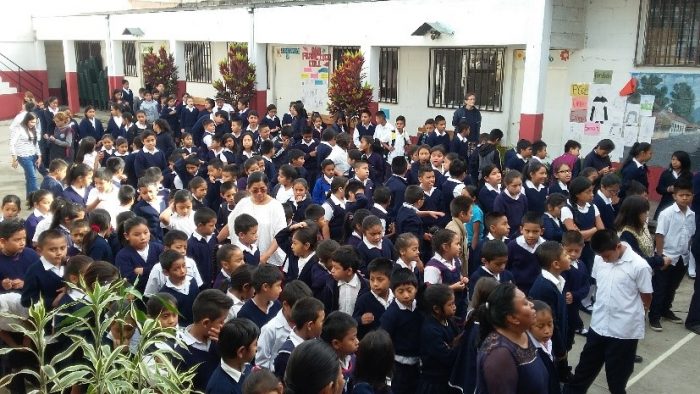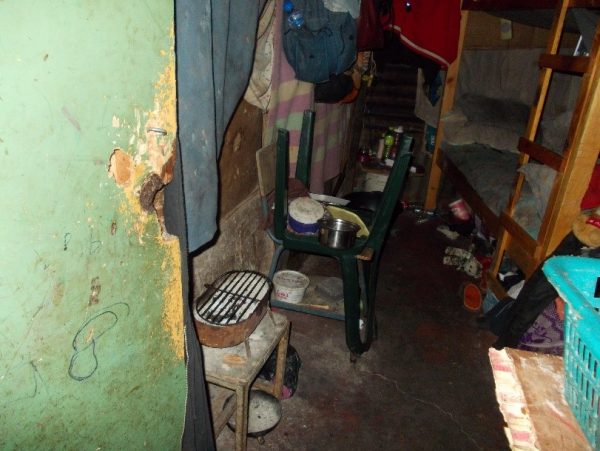Charity Spotlight: This blog post was provided by Daniel Rehak, Founder and Director of Together Education Works, as part of our ongoing charity spotlight series.
Can you imagine starting the school year knowing that you and your fellow students wouldn’t have access to any textbooks since your school has none to give? Students would have to write everything down in their cuaderno (notebook) and try to absorb as much information as they can during class. It’s certainly a different reality from what Canadian students face as they head back to class this September, but unfortunately this is considered normal for students attending school next to a large garbage dump in Guatemala City.
Monday mornings are always difficult at the grade school next to the garbage dump. All of the students live in the “Red Zone,” an area near the school that lacks any kind of infrastructure (parks, streets, stores, medical facilities, etc.). It is dangerous, controlled by various gangs, and most of the students come to school without any breakfast.

Monday mornings are always difficult at the grade school next to the garbage dump. All of the students live in the “Red Zone,” an area near the school that lacks any kind of infrastructure (parks, streets, stores, medical facilities, etc.). It is dangerous, controlled by various gangs, and most of the students come to school without any breakfast.
Mateo and Sebastián’s Story
9-year-old Mateo* sits quietly in his grade two class and intently reads, while holding his English book four inches from one eye. He lives with his mother, who works in the garbage dump as a guajera (recycler). Small for his age, Mateo has Amblyopia and his eyes point outwards in opposite directions. In Canada, some corrective surgery would have already taken place by his age, but his mother cannot afford to pay for the corrective surgery in Guatemala. Luckily, Mateo now has an apadrinada (benefactor) who is willing to cover all medical costs, and will soon undergo surgery in an effort to correct his vision.

Sebastián*, Mateo’s younger brother, is eight and enrolled in the third grade. He lives with nine other family members in a tiny two-room house made of corrugated steel sheets. His aunt, who also works as a guajera at the dump, works six days a week, 12 hours a day recycling plastic and earns $7.50 a day. Recently, she was unable to work for three weeks because her 4-month old baby was sick with pneumonia and she had no one else to look after her during the day. Lunch was being prepared during my visit with their family and I watched as they first cleaned the chicken skins in water and then cooked them on a small wood stove along with a few tortillas. The aunt claims the water is drinkable; however it is not, by Canadian standards. The water is highly contaminated and is the cause of gastro-intestinal and other illnesses.
We Believe in the Right to a Quality Education
I first worked in Guatemala in 2004 and have since returned several times to complete projects at 3 schools. In 2016, I created Together Education Works to continue helping students access the necessary education, which may in turn lead to a brighter future.
Together Education Works promotes and supports education by helping to improve school infrastructure including access to food, water, and other basic necessities for students and teachers. At Together Education Works, we believe that education is at the heart of systemic change.
“Education is the most powerful weapon, which you can use to change the world.” Nelson Mandela

In May 2017, Together Education Works designed a three-volume set of English workbooks that can be used for grades one through six at the schools in Guatemala. Thirty copies are made available for all of the students. A new breakfast program was started recently at one of the schools. It consists of a cup of warm milk, atol (hot drink made of corn flour, sugar and water) or incaparina (food supplement made of corn and soy flour enhanced with vitamins and minerals), and a bun, banana, or cookies.
With food in their tummies and the chance to learn, we believe the next generation of students in Guatemala will have a brighter future and access to better employment opportunities.
To learn more about Together Education Works, or to make a donation, visit their Charity Profile Page.
*Names have been changed to protect the identity and privacy of those mentioned.